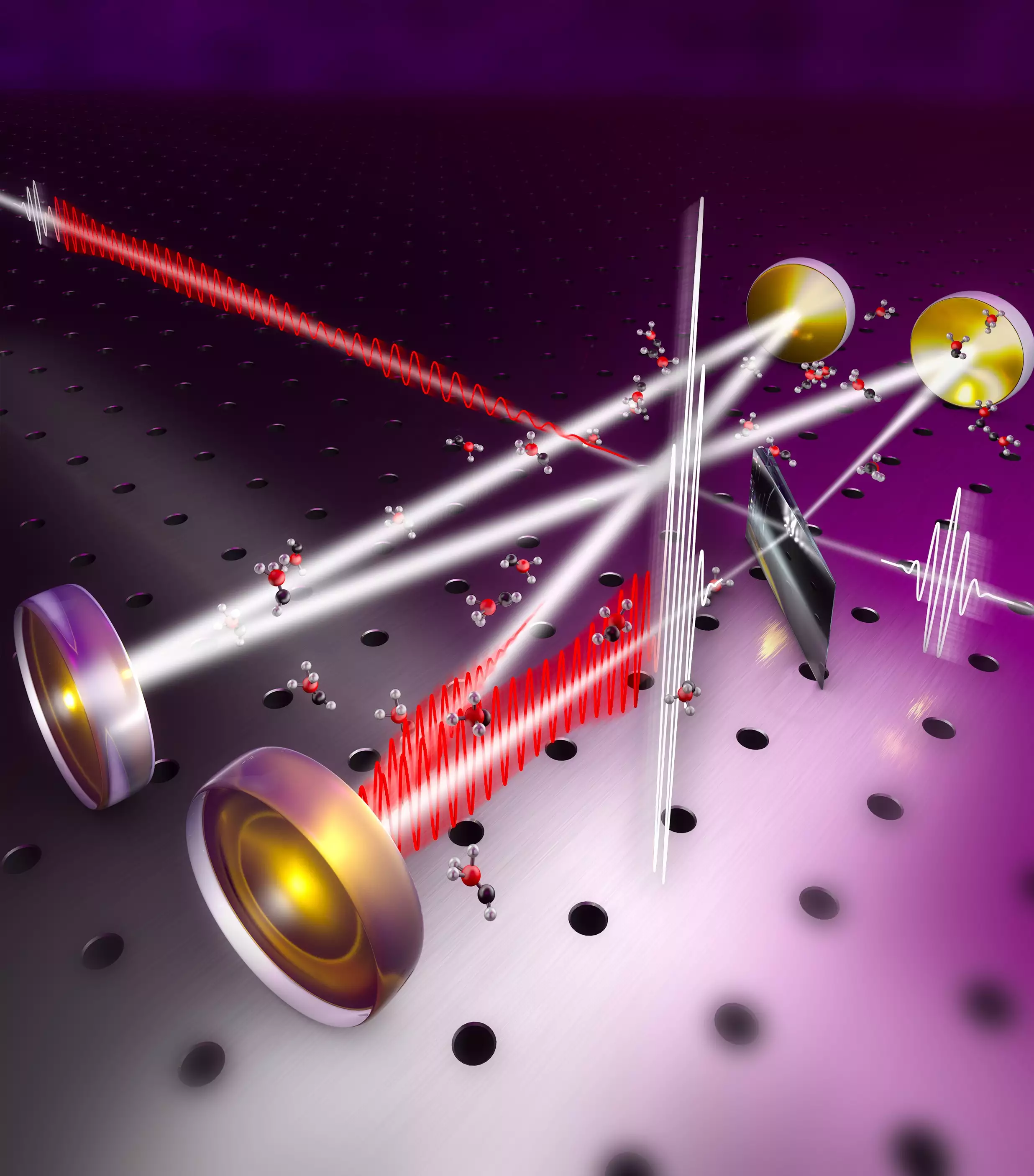A BRAND-NEW OPTICAL RESONATOR THAT CAN DETECT LOW-CONCENTRATION MOLECULAR VIBRATION
A new optical resonator was created by laser physicists from the attoworld group at the Max Planck Institute of Quantum Optics to detect the vibration of low concentration molecules.
Animals with sensitive nostrils may detect minute airborne particles like volatile organic molecules. Contrarily, humans are creating novel technologies for this purpose, like optical spectroscopy. This determines the molecular make-up of gases using laser light. It creates the possibility of even outperforming these "smelling" triumphs for chemicals that animal noses are completely incapable of sensing. The "olfactory power" of spectroscopy is currently underutilised. The underlying idea is that when molecules are exposed to laser light, they start to vibrate in a distinctive way and release light. However, at low concentrations, its emission is incredibly feeble.
Scientists from the University of British Columbia and the Leibniz Institute for Photonic Technologies together with other researchers are currently demonstrating a method to amplify the radiation of molecules that follows the excitation, significantly enhancing the "sense of smell" of molecular laser spectroscopy.
When a guitar string is plucked, it starts to vibrate and creates a tone with the pitch, timbre, and modulation unique to that particular guitar. Similar effects occur when a gas molecule is "struck" by an ultrashort laser pulse: the gas molecule absorbs some of the laser pulse's energy. Atoms within it start to vibrate. The molecule emits a distinctive visual waveform that may be observed spectroscopically rather than a sound wave. Information on the molecular make-up of the gas is contained in this waveform. This "song of the molecules" is sadly quite quiet. This is due to the fact that only a very small portion of the energy in the pulse is transformed into the slowly declining light waves that carry this important information.
Alternating laser beams in time
Now, researchers in the field of quantum optics have discovered a method to amplify molecular reactions to repeating ultrashort laser pulses in the so-called molecular fingerprint spectral region. They worked with researchers from the University of British Columbia and the Leibniz Institute for Photonic Technologies in Jena. The characteristic resonances of organic compounds can be found in the fingerprint spectral region. The pulses were delivered into a gas-filled optical resonator by physicists in order to achieve this. The laser pulses are temporally overlapping with their predecessors and successors as they are steered back into the resonator by a number of mirrors. The pulses and chemical reactions are amplified as a result. Now, for the first time, these optical waveforms of amplified molecular responses have been coupled out from the cavity and measured with field-resolved spectroscopy by the researchers in the laser technology .

There were a few obstacles that needed to be solved before this was feasible. According to researchers in the field of quantum optics - passive optical resonators had so far only been able to operate at near-infrared wavelengths and could only cover bandwidths of less than 20% of the central optical frequency. However, it has to be reconsidered which optical components and locking mechanisms could be employed to construct the cavity in order to cover a sizable amount of the fingerprint spectrum in the mid-infrared. Additionally, during one orbit through the resonator, the ultrashort pulses required for field-resolved spectroscopy cannot change their waveform - according to researchers in the field of quantum optics. The laser physicists eventually discovered a setup with four gold-coated mirrors, humidity-controlled air, and a diamond plate in the shape of a wedge to couple the light into and out of the resonator. Their method enables a more than 500-fold increase in the energy present in the molecular response that follows the impulsive excitation.
Increases likelihood of accurately detecting diseases
The past research on enhancement cavities and our knowledge of field-resolved spectroscopy are combined in the novel measurement setup. The findings provide new opportunities for broadband gas spectroscopy with sensitivity ranges from one to a trillion particles. The technique also has a high potential for complicated gas mixtures like human breath, where some components are present in extremely high concentrations while others are present in very low concentrations, due to the relatively narrow absorption lines in the gas phase - According to researchers in the field of quantum optics. The novel strategy improves the likelihood that human breath-based disease detection will become a reliable method in the future, opening up, for instance, new, non-invasive methods for therapy monitoring.
